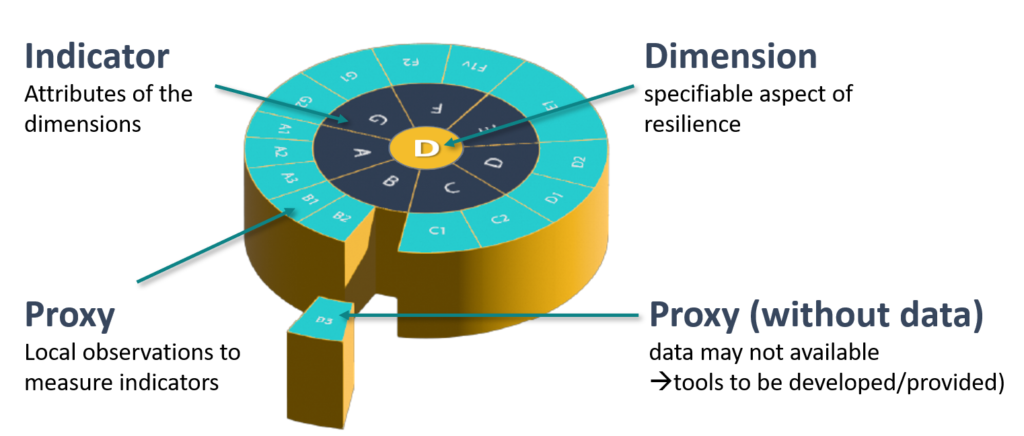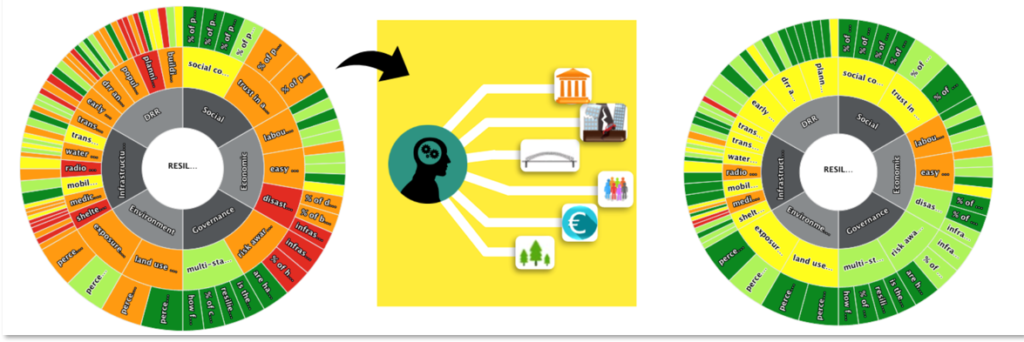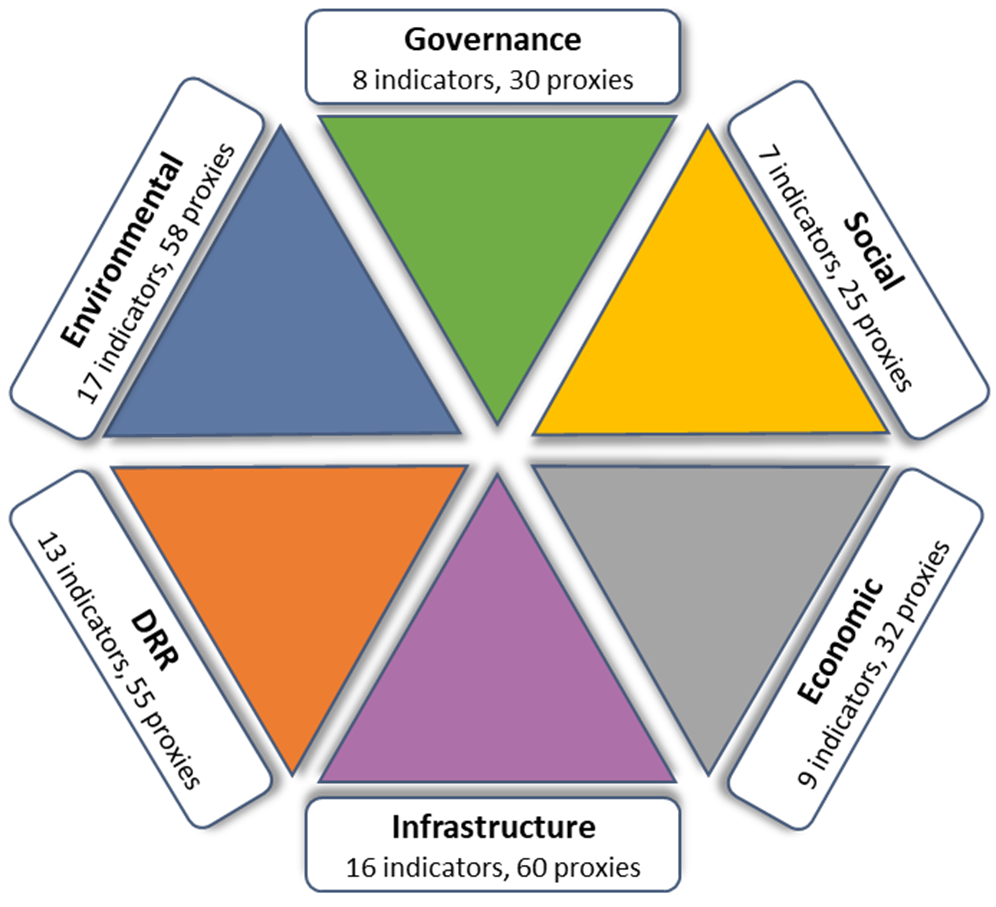
The work carried out in WP3 and, in particular, Task 3.1 has defined the RESILOC scientific approach to the assessment of resilience.
The resilience “concept” has been broken down into six ‘dimensions’, defined as ‘a specifiable aspect of a concept’

and a methodology has been designed for the operationalisation of the method for identifying measurable “attributes” of the dimensions: they are the ‘indicators’ that must capture and reflect the observable evidence of resilience.

The application of the process has resulted in the identification of ‘proxies’ to the selected indicators, as the quali-quantitative results of observations and measurements in local communities that can be practically used to measure the indicators.

According to this process, the overarching concept of assessing resilience has been operationalized with the selection of a number of indicators that, according to the local stakeholders, can capture the essence of the underlying elements of resilience. When each of these indicators is then calculated on the basis of appropriate and representative proxies, the overall process of building a “snapshot” of resilience for a given community against a given scenario is completed.

In addition to the described operationalization of the assessment process, three particular attributes to proxies have been identified: relevance, direction and target. They “qualify” the quali-quantitative value of a proxy putting it in relation to the community expectations.
The “relevance” of a proxy, expressed in a scale from 0 to 100, represents the actual usefulness and representativity of a proxy in the process of calculating the related indicator for that community and in the analysed scenario.
The “direction” of a proxy defines how its change impact on resilience: a positive direction means that an increase in the value of the proxy results in a better resilience.
The “target” for a value establishes a link between the proxy and the expectations of the community, offering a practical way for assessing resilience against an objective that is either defined by the law, or chosen by the community and its representatives.
The combination of the proxy values and attributes into a calculated indicator comes with a relative and discrete assessment on how close to the self-defined targets the community is. The process for transforming proxies and attributes into a qualitative assessment of an indicator is performed by the platform and presented in a graphical form to the users, so that they can get a global assessment of resilience together with the ability to dig into its elements and identify where actions are to be taken.
D3.1 has produced the DIP framework (Dimension-Indicator-Proxy), the operationalised assessment method and a list of indicators and proxies organised according to the dimensions they belong to:
Disaster Risk Reduction: 13 indicators, 55 proxies;

In WP4, this philosophy will have to be translated into a functional and usable platform.